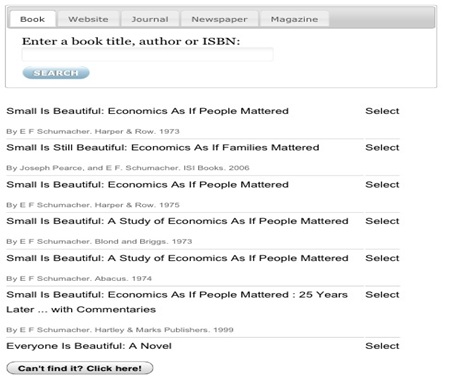
Use Times or Times New Roman 12 pt font.One inch margins on sides, top and bottom.It is easiest if you use the correct settings from the beginning otherwise you will have to go back and reformat your paper. Use the following guidelines when setting up your paper.
#ENDNOTE GENERATOR CHICAGO FREE#
New York: Free Press.Your teachers expect to receive papers that are properly formatted and laid out. For example, the book reference from above looks like this in author-date style. The only difference is that the publication year comes straight after the author name, to match with the in-text citations. The reference list is similar to a bibliography: It appears at the end of your text and lists all your sources in full. Reference listĪuthor-date citations are always accompanied by a reference list. Unlike note citations, author-date citations look the same for all source types. Chicago author-date exampleThe success literature of the twentieth century is “filled with social image consciousness, techniques, and quick fixes” (Covey 1989, 18). In this style, citations appear in parentheses in the text. In the (social) sciences, you may be told to use author-date style instead. Formats and examples for some common source types are shown below.Īuthor last name, first name. Chicago style bibliography examplesīibliography entries vary in format according to source type. However, it is recommended to include one in most cases, with the exception of very short texts with few sources.Ĭheck with your instructor if you’re not sure whether to include one.
#ENDNOTE GENERATOR CHICAGO FULL#
It is not mandatory to include a bibliography if you have cited your sources with full notes. If there are 11 or more, list the first seven followed by “et al.” If a source has multiple authors, list up to 10 in the bibliography.

Each source is listed on a new line, with a hanging indent applied to sources that run over onto multiple lines. It appears at the end of your paper (before any appendices).Īuthor names are inverted in the bibliography, and sources are alphabetized by author last name. The bibliography lists full references for all your sources. Navigate through the Chicago citation examples using the tabs below.ĭiscover proofreading & editing Creating a Chicago style bibliography The page range is separated by an en dash. The elements of the citation are separated by commas, and the note always ends with a period. Page number(s) should be included if you are referring to a specific part of the text. The other elements vary by the type of source you’re citing. Chicago note citation examplesĪ Chicago footnote or endnote citation always contains the author’s name and the title of the source. When there are four or more, use “ et al.” (Latin for “and others”).

When a source has multiple authors, list up to three in your note citations. It’s best to check with your instructor if you’re unsure which rule to follow. Guidelines can vary across fields, though sometimes you might be required to use full notes every time, or conversely to use short notes every time, as long as all your sources are listed in the bibliography. The usual rule is to use a full note for the first citation of each source, and a short note for subsequent citations of the same source.

Full notes provide complete source information, while short notes include only the author’s last name, the source title, and the page number(s) of the cited passage. short notesĬitations can take the form of full notes or short notes. Most word-processing programs can automatically link your superscript numbers and notes. Choose one or the other and use it consistently. To cite sources in Chicago notes and bibliography style, place a superscript number at the end of a sentence or clause, after the punctuation mark, corresponding to a numbered footnote or endnote.įootnotes appear at the bottom of each page, while endnotes appear at the end of the text. Frequently asked questions about Chicago style citation.


 0 kommentar(er)
0 kommentar(er)
